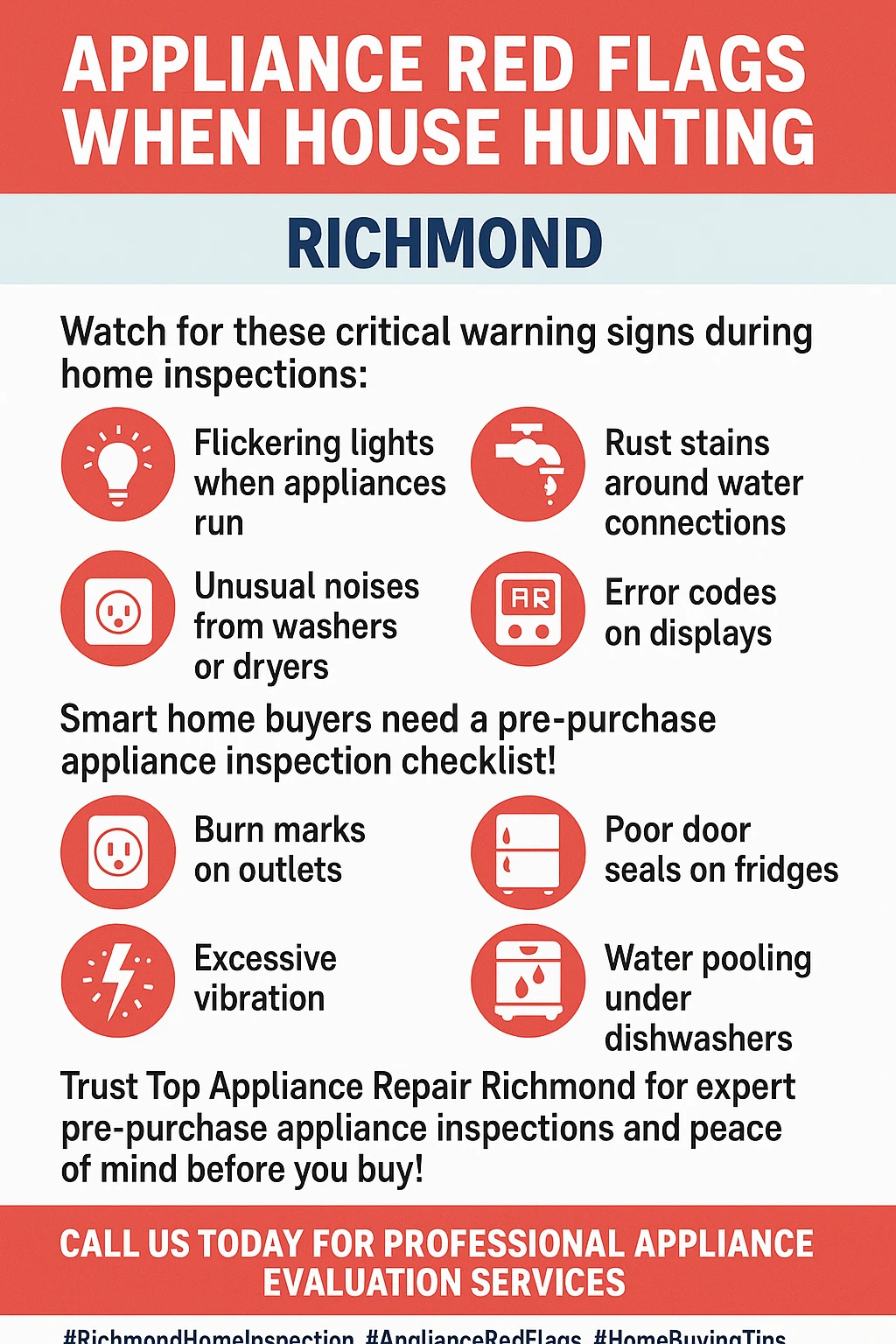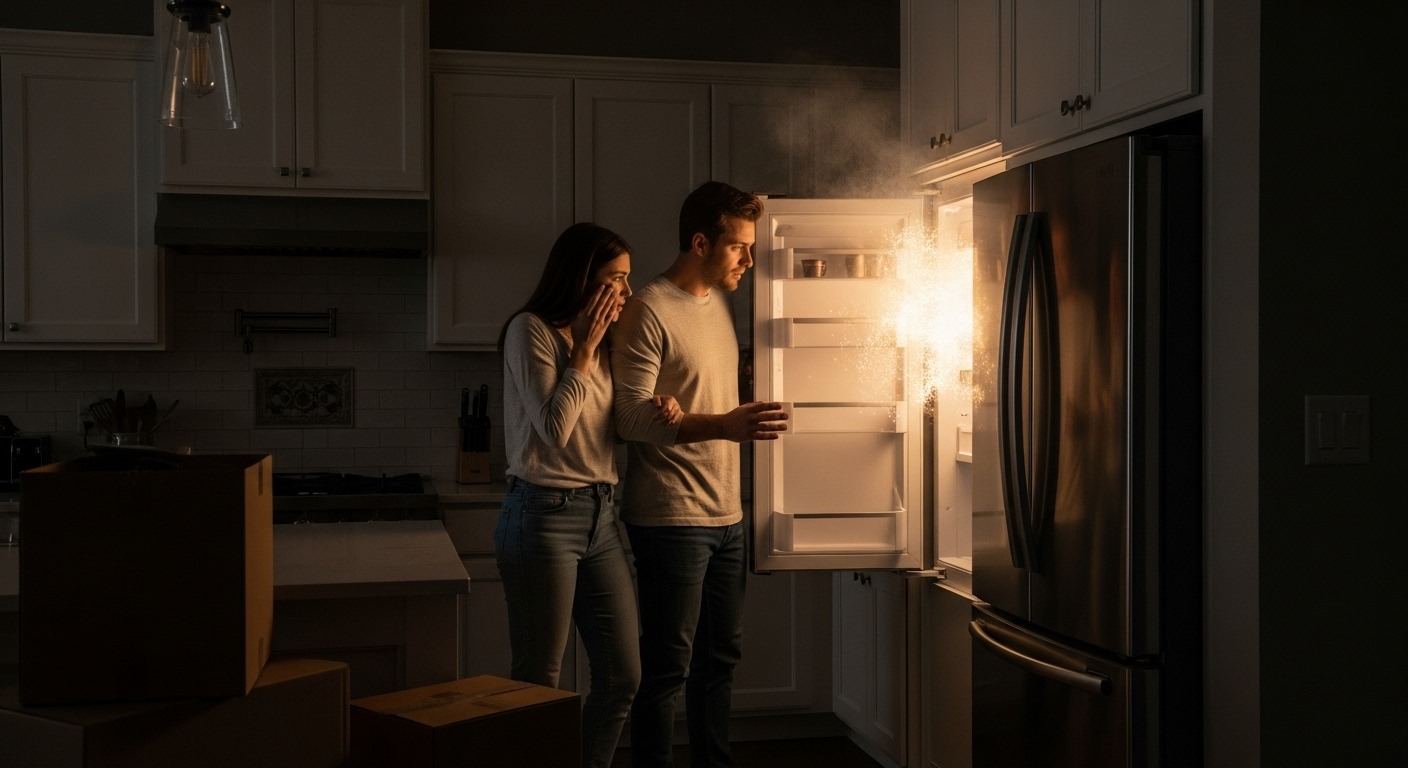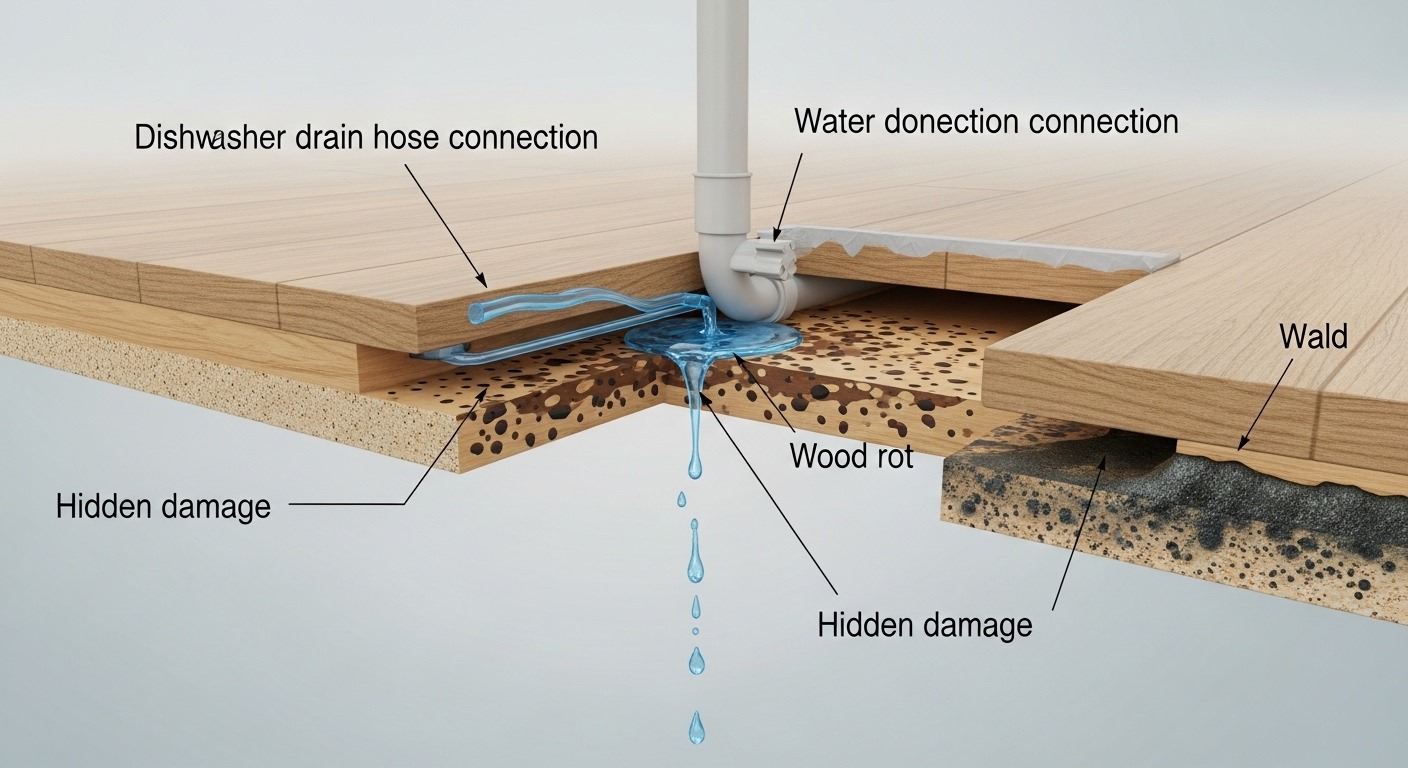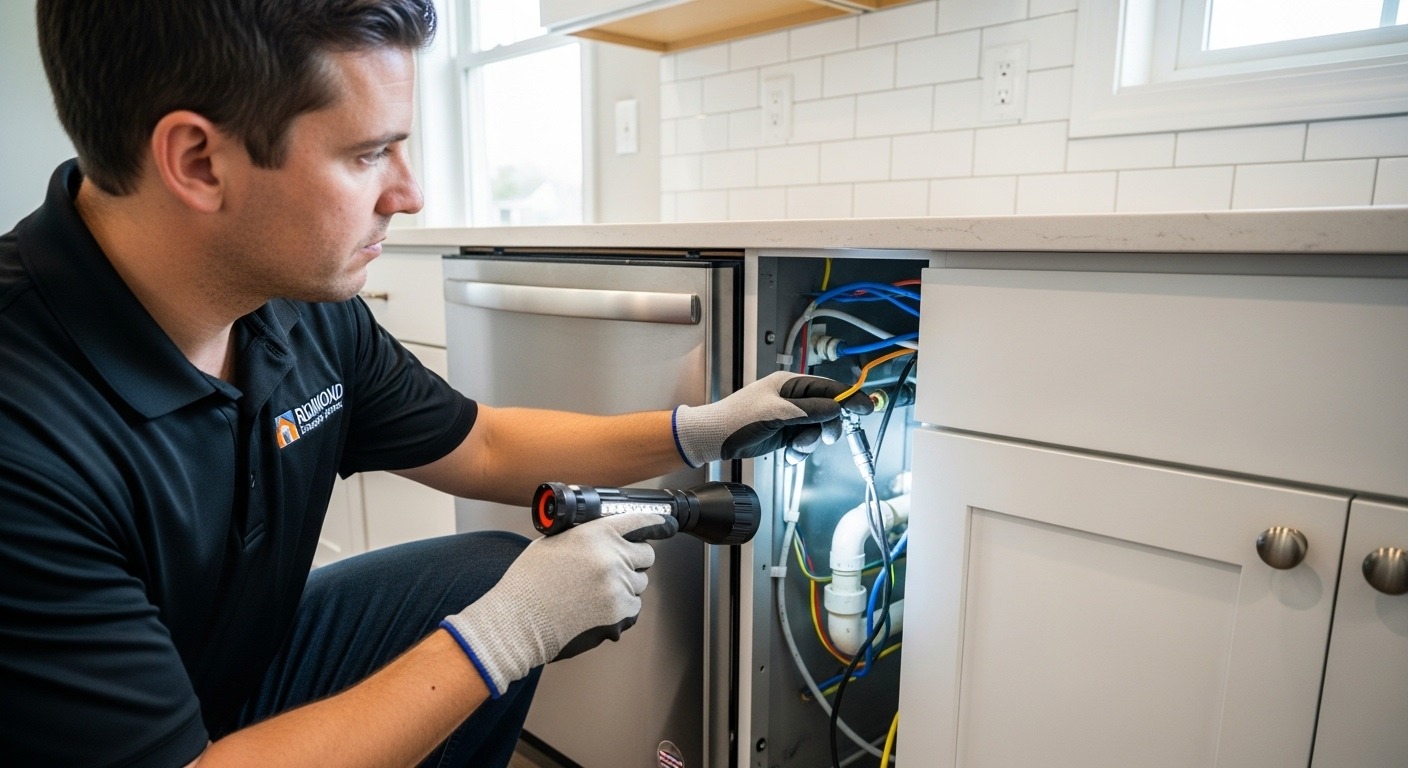Richmond Home Inspection Appliance Red Flags: Critical Warning Signs That Could Kill Your House Deal (And Cost You Thousands Later)
Worried that dream Richmond home might be hiding appliance nightmares that could drain your bank account? You’re right to be concerned – home inspections uncover critical appliance problems in nearly 20% of properties, and some issues can cost over $15,000 to fix after closing.
Picture this: you’ve just closed on your perfect Richmond home, only to discover the dishwasher has been slowly flooding the subflooring for months, the refrigerator compressor is on its last legs, and the dryer vent is a fire hazard waiting to happen. What should have been move-in excitement becomes a financial emergency that could have been avoided with proper inspection knowledge. The reality is that most first-time homebuyers focus on obvious problems like roof damage or foundation issues, while experienced Richmond real estate professionals know that appliance red flags can be equally devastating to your budget and safety.
Every year, unsuspecting homebuyers inherit appliance problems that range from annoying maintenance issues to dangerous safety hazards requiring immediate attention. The difference between a smooth home purchase and a costly nightmare often comes down to recognizing these critical warning signs during your home inspection. Understanding what to look for, how much repairs actually cost, and when to negotiate versus walk away can save you thousands of dollars and protect your family’s safety.
Key Outtakes:
- Dishwasher drain loops and refrigerator compressor failures are among the most common deal-breaking appliance issues found during Richmond home inspections
- Appliances past their expected lifespan (8-20 years depending on type) signal imminent replacement costs averaging $400-$2,300 per unit
- The 50% rule determines repair vs. replace: if repair costs exceed 50% of replacement cost AND the appliance is past half its lifespan, replacement is more economical
- Dryer vent violations pose serious fire hazards and are found in approximately 15-20% of home inspections nationwide
- Pre-1990s appliances can cost homeowners $200-$455 monthly in excessive energy bills compared to modern efficient models

The Kitchen Appliance Danger Zone: What Richmond Home Inspectors Flag First

The kitchen represents the heart of most Richmond homes, but it’s also where some of the most expensive and dangerous appliance problems hide in plain sight. Professional home inspectors consistently identify kitchen appliances as one of the top areas where costly issues emerge, often involving water damage, electrical hazards, and expensive mechanical failures that sellers conveniently forget to mention. Understanding these red flags before you sign on the dotted line can mean the difference between a smooth move-in and facing thousands in unexpected repair bills during your first months of homeownership.
Kitchen appliances work harder than almost any other systems in your home, running multiple cycles daily while dealing with heat, moisture, grease, and constant usage that accelerates wear and tear. The combination of water, electricity, and gas connections creates multiple failure points that can cascade into major problems, from simple repair needs to complete safety hazards requiring immediate professional attention. What makes kitchen appliance issues particularly problematic is that many of them develop slowly over time, making them easy for sellers to overlook or ignore until they become someone else’s expensive problem.
Smart buyers know to pay special attention to appliance ages, maintenance history, and subtle warning signs that indicate impending failures. Professional inspectors look beyond basic operation to examine installation quality, code compliance, and early indicators of problems that might not manifest until weeks or months after closing. The key is recognizing which kitchen appliance issues represent minor maintenance concerns versus major red flags that should trigger serious negotiation or cause you to reconsider the purchase entirely.
Dishwasher Red Flags That Signal Major Water Damage Risk

Dishwashers represent one of the most common sources of catastrophic water damage in homes, yet many buyers focus only on whether the unit runs a complete cycle during their walkthrough. The most critical issue that professional inspectors flag is missing or improper “high loop” drain installation, a code requirement designed to prevent dirty water from siphoning back into your dishwasher. This seemingly minor plumbing detail can lead to health hazards from contaminated dishes and indicates sloppy installation that may signal other hidden problems throughout the kitchen.
Visual inspection of the dishwasher interior reveals crucial information about the unit’s remaining lifespan and potential for sudden failure. Rust stains inside the tub, particularly around the door seals or at the bottom where water pools, indicate that corrosion has begun eating away at the appliance’s structural integrity. With an average dishwasher lifespan of just 9 years, rust formation typically signals that replacement will be necessary within 12-24 months, regardless of how well the unit appears to function during your inspection.
Water damage evidence around the dishwasher area tells a story that extends far beyond the appliance itself. Soft or discolored flooring near the dishwasher, water stains on adjacent cabinetry, or warping of the kitchen floor can indicate chronic leaking that may have compromised subflooring, joists, or even created mold growth in wall cavities. While dishwasher repairs typically cost $160-$300, water damage remediation can easily reach $3,000-$15,000 depending on the extent of structural damage and mold growth.
The electrical connections for dishwashers also present potential code violations that inspectors frequently discover. Modern electrical codes require GFCI protection for appliances within 6 feet of water sources, and older homes may not comply with current safety standards. Missing or improperly wired GFCI outlets not only create safety hazards but may require electrical panel upgrades costing $850-$2,500 to bring the kitchen up to current code requirements.
Strange noises during operation, such as grinding, squealing, or unusual vibrations, often indicate worn bearings, damaged seals, or pump problems that will require professional repair. These mechanical issues typically worsen rapidly once they begin, and repair costs for major components often approach the price of replacement units. Combined with the age factor, dishwashers displaying mechanical symptoms during inspection should be flagged as likely replacement candidates within the first year of ownership.
Refrigerator Compressor Failures: The $1,000+ Surprise

Refrigerator compressor problems represent one of the most expensive single-appliance failures that new homeowners encounter, often striking without warning and requiring immediate attention to prevent food spoilage. The compressor serves as the heart of your refrigerator’s cooling system, and when it fails, you’re typically looking at repair costs of $700-$1,250 including labor, refrigerant replacement, and the welding work required for proper installation. What makes compressor failures particularly frustrating is that they often occur in refrigerators that otherwise appear to be in good condition, catching homeowners completely off guard.
During your home inspection walkthrough, pay attention to how the refrigerator maintains temperature and whether it runs constantly or cycles on and off normally. A refrigerator that runs continuously without achieving proper cooling temperatures typically indicates a failing compressor that’s working harder and harder to maintain basic function. Similarly, units that struggle to keep freezer compartments properly frozen or show significant temperature fluctuations between visits likely have compressor issues that will require professional diagnosis.
The age factor becomes critical when evaluating whether refrigerator compressor repairs make financial sense. With average refrigerator lifespans ranging from 9-13 years, any unit over 10 years old becomes economically impractical to repair when major components fail. The 50% rule applies directly here: if repair costs exceed half the replacement cost and the appliance has surpassed half its expected lifespan, replacement becomes the smarter financial decision even if the repair is technically feasible.
Physical signs of compressor distress include excessive heat buildup on the exterior surfaces of the refrigerator, particularly around the back and sides where the cooling coils are located. A failing compressor works harder and generates more heat than normal, making the external surfaces noticeably warm to the touch. Unusual noises such as clicking, buzzing, or humming sounds that weren’t present during previous visits also indicate internal mechanical problems that typically require expensive professional repair.
Poor cooling performance manif
